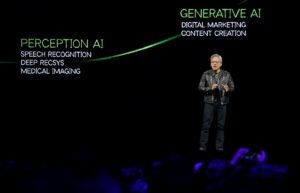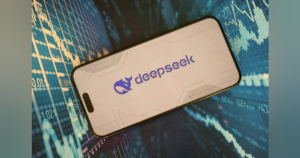Nvidia CEO Addresses Misconceptions Surrounding DeepSeek’s Effect

Nvidia’s AI Infrastructure Demand: Insights from Jensen Huang
Nvidia Corporation has made waves in the world of artificial intelligence (AI) with its cutting-edge technology that has sparked significant investments across various industries. During a recent meeting with analysts and investors at the GTC conference in San Jose, California, Chief Executive Officer Jensen Huang shared key insights about the ongoing demand for AI computing infrastructure.
Rising Demand for Complex AI Models
Huang stated that new AI models capable of providing sophisticated answers will create an even stronger demand for advanced computing systems. Some concerns have arisen regarding the efficiency of a new AI model from the Chinese startup DeekSeek, which suggested that it could reduce the need for chips and powerful servers. Huang, however, dismissed these claims, asserting that the worries surrounding the R1 model were “completely wrong” and emphasized that demand for computational resources is growing.
Market Response and Investor Sentiment
After Huang’s remarks, Nvidia’s stock rose by 2.4% in New York trading. This comes after a challenging year in which the company’s shares had seen a 14% decline. Investors are increasingly focused on whether the spending habits of companies on AI infrastructure will continue, especially in light of economic forecast uncertainties for 2025.
As Nvidia strives to expand its customer base across different sectors, it’s actively promoting the anticipated economic benefits that AI technology can bring. The company, which has recently achieved the status of the world’s most valuable chipmaker, is working to reassure its stakeholders about the continued investment in AI capabilities.
Customer Investments in AI Technology
Despite fears triggered by DeekSeek’s affordable AI model, Nvidia’s major clients have reaffirmed their commitment to investing in AI infrastructure. Recent analyses reveal that spending by top data center operators is rising faster than previously expected. Huang pointed out that many of these organizations need robust chips to enhance their revenue generation, rather than merely seeking cheaper alternatives.
Direct Competition and Customer Needs
Huang also addressed the trend of companies developing their own chips to replace Nvidia’s AI accelerators. Notably, firms like Alphabet Inc.’s Google are collaborating with Broadcom Inc. to design their application-specific integrated circuits (ASICs). However, Huang argued that while many of these new designs are conceived, they are not always deployed in data centers, as companies prioritize performance over cost alone.
“It’s a different calculus,” Huang remarked, highlighting that the decision-making process for these CEOs is driven by the need for effective revenue generation, not just cost savings.
Strength of Nvidia’s Offerings
Nvidia has continued to push the boundaries of chip design, with its latest Blackwell platform boasting a performance increase of 40 times compared to the previous generation, Hopper. Huang presented compelling data indicating that orders for Blackwell have outpaced those for Hopper products at similar points in their life cycles, particularly from cloud service providers. This trend signals an optimistic outlook for spending in AI data centers across various industries.
Economic Shifts and Manufacturing Strategy
In the event of an economic downturn, Huang believes that companies may pivot more of their investments toward AI technology as it offers growth potential in challenging times. He also addressed the potential impact of proposed tariffs on imports, noting that these would have a minimal effect on Nvidia’s operations. The company plans to continue shifting its manufacturing capabilities to domestic locations, utilizing facilities like the one operated by Taiwan Semiconductor Manufacturing Co. in Arizona.
With these insights, Nvidia is positioned to navigate the rapidly changing landscape of AI technology, and its leadership appears committed to maintaining a stronghold in this competitive market.






